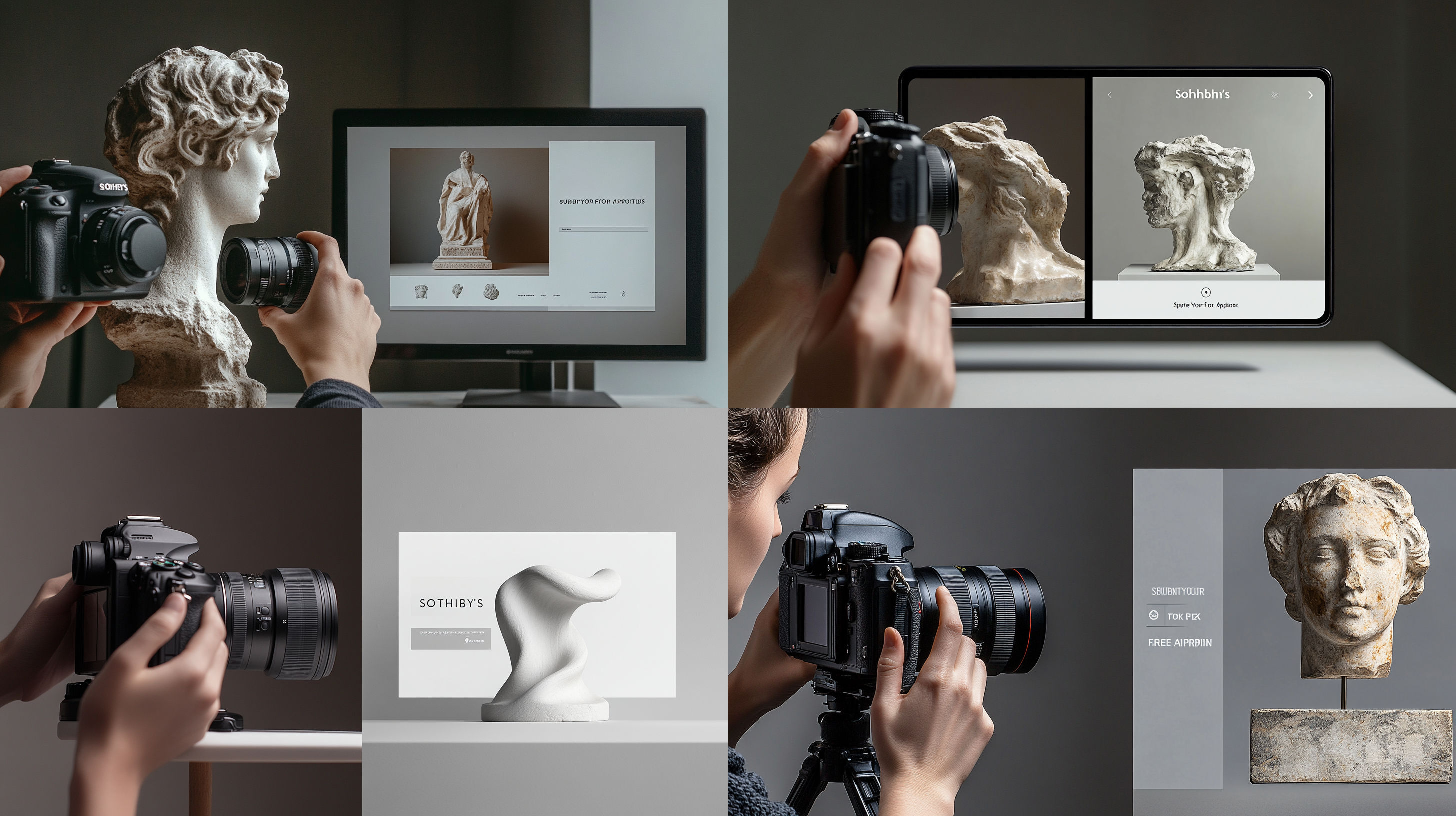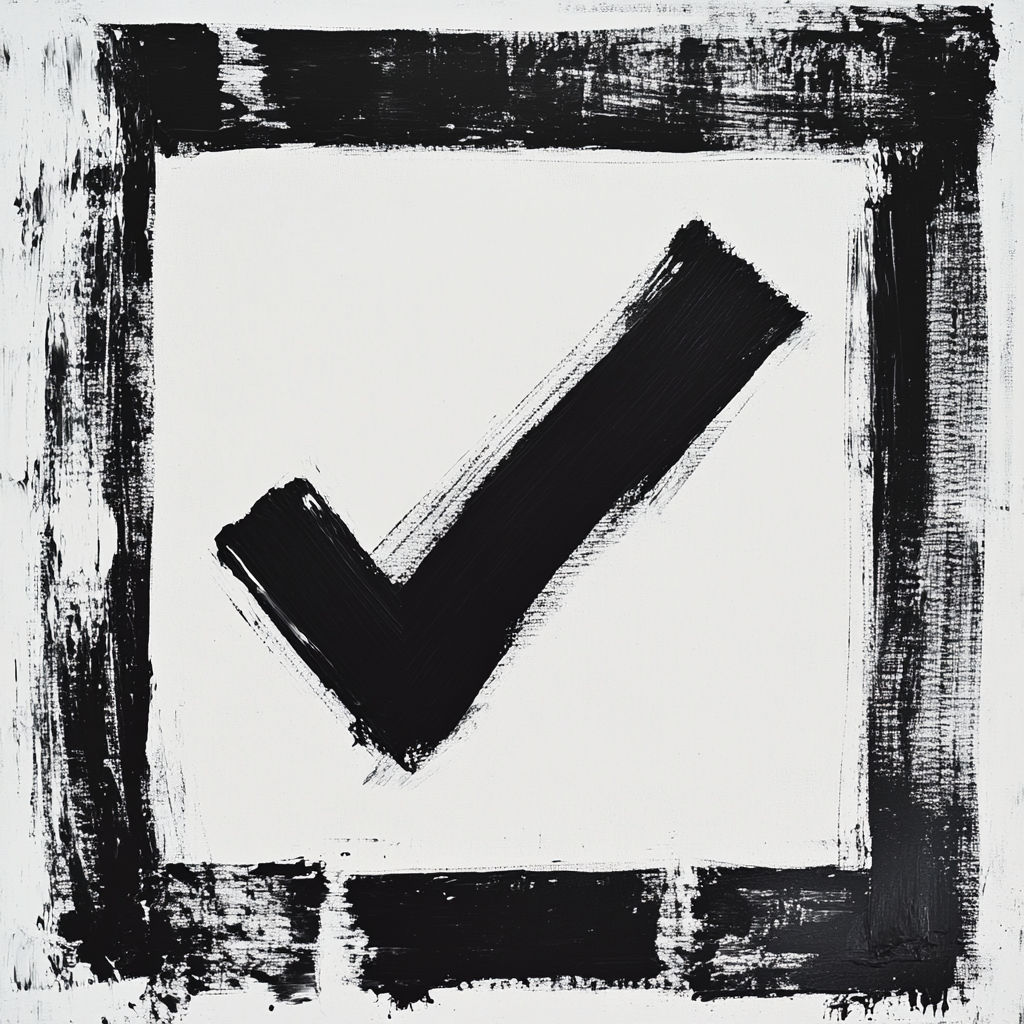Understanding Sotheby’s Free Art Appraisal Service
If you’ve ever wondered about the value of artwork in your possession, Sotheby’s offers an online valuation service that might be your first stop. But how exactly does this “free” service work, and what should you expect?

What Sotheby's Free Appraisal Service Actually Offers
Sotheby’s free valuation service is primarily designed as a preliminary step for potential consignors—people who may want to sell their items through Sotheby’s auctions. While technically free of charge, this service comes with several important caveats:
- Selective Evaluation: Sotheby’s specialists only provide estimates for items they consider suitable for their sales
- Preliminary Assessment: These are not formal appraisals with detailed documentation
- Sales-Oriented: The primary purpose is to identify items Sotheby’s might want to auction
- No Guarantee: Not all submissions receive responses or valuations
As stated on their help center: “Sotheby’s provides complimentary estimates, but our specialists will only offer estimates for property they identify as suited for sale through Sotheby’s.” This selective approach means many items may not receive the attention you’re hoping for.
Sotheby's Appraisal Process at a Glance
The Submission Process: How to Request a Free Estimate
Submitting your art for Sotheby’s free valuation service involves a straightforward process through their online platform.

Step-by-Step Guide to Submitting Your Artwork
- Visit Sotheby’s Sell Page: Navigate to Sotheby’s official selling portal
- Create an Account: Sign up or log in to your Sotheby’s account
- Complete the Submission Form: Provide detailed information about your item
- Upload Quality Photos: Include clear images from multiple angles
- Submit and Wait: After submission, wait for specialists to review your item
For the best chance of receiving a response, be thorough when describing your artwork. Include any provenance information (history of ownership), condition details, dimensions, and artist information.
Information to Include in Your Submission
What to Expect After Submission
Once you’ve submitted your item information and photos, what happens next can vary significantly depending on your artwork’s marketability and value.

Response Timeframes and Possibilities
The waiting period after submission can be unpredictable. While some users report receiving responses within days, others mention waiting weeks or even months. According to Reddit discussions, waiting more than two months is not uncommon.
When Sotheby’s does respond, you might receive one of these outcomes:
- Preliminary Estimate: A specialist provides an auction estimate range
- Request for More Information: Additional details or better photos may be requested
- Invitation to Consign: For valuable items, Sotheby’s may express interest in selling your artwork
- Declination: If your item doesn’t meet their criteria, you may receive a polite decline
- No Response: Unfortunately, some submissions receive no reply at all
If your item catches their interest, you might receive a call or email from a specialist to discuss the next steps, which could include consignment terms.
Typical Free Art Appraisal Journey
Initial Submission
Complete online form with artwork details and upload photos to Sotheby's platform.
Waiting Period
Specialists review submissions. Timeframe varies greatly depending on item value and department workload.
Specialist Feedback
If interested, Sotheby's provides preliminary estimate or requests additional information.
Consignment Discussion
For suitable items, discuss auction terms, lot estimate, reserve price, and seller's commission.
Limitations of Sotheby’s Free Appraisal Service
While a free estimate from Sotheby’s might seem appealing, understanding its limitations is crucial before relying on this service for important decisions.

Important Constraints to Consider
Key Limitations of Free Auction House Estimates
- Not Formal Appraisals: These estimates don’t meet requirements for insurance, estate planning, or tax purposes
- Sales-Focused Perspective: Values reflect potential auction results, not replacement or insurance values
- Limited Scope: Many items won’t be evaluated if they don’t meet auction thresholds
- Selective Response: No guarantee that all submissions will receive attention
- Minimal Documentation: Typically provides only a range, not detailed analysis
- Auction Bias: Estimates reflect what Sotheby’s believes they can sell the item for through their specific channels
As explained by VWART.com: “In reality, the free appraisals given by auction houses are not real art appraisals at all. They are only quick estimations of what they think your art will fetch at the hammer.”
This distinction matters because different valuation types serve different purposes. An auction estimate is just one perspective on an artwork’s value and may not be suitable for insurance, estate planning, or other financial purposes.
Types of Art Valuations
| Category | Price Range | Notes |
|---|---|---|
| Auction Estimate | What an item might sell for at auction | Selling through auction houses |
| Retail Replacement Value | Cost to replace with similar item at retail | Insurance coverage |
| Fair Market Value | Value between willing buyer and seller | Estate planning, tax purposes |
| Formal Written Appraisal | Comprehensive documented valuation | Legal, insurance, donation purposes |
Note: Price ranges are approximate and can vary based on condition, rarity, and market demand.
When to Use Sotheby’s Free Appraisal vs. Paid Services
Understanding when Sotheby’s free estimate is appropriate—and when you should invest in a professional appraisal—can save you time and ensure you get the valuation you actually need.

Best Uses for Sotheby’s Free Estimate Service
Sotheby’s complimentary valuation is most appropriate when:
- Considering Auction: You’re primarily interested in selling through a major auction house
- Initial Curiosity: You want a preliminary idea of whether an item has significant auction value
- Auction Market Check: You’re interested in seeing if your item fits current auction market interests
- No Urgent Timeline: You can wait weeks or months for a response
- High-Value Items: Your artwork is likely valuable enough to meet Sotheby’s thresholds
When to Invest in Professional Appraisal Services
In many situations, a paid professional appraisal is the better option:
- Insurance Requirements: You need documented valuation for insurance coverage
- Estate Planning: For inheritance, estate tax, or division of assets
- Tax Purposes: For charitable donations, estate taxes, or capital gains
- Legal Matters: Divorce proceedings, settlements, or legal disputes
- Verified Authenticity: You need expert examination to confirm authenticity
- Detailed Documentation: You require a comprehensive analysis of condition, provenance, and value
- Mid-Range Items: Your item may be valuable but below auction house thresholds
Formal appraisals typically range from $250-$1,000 depending on the item, appraiser’s expertise, and depth of research required.
Comparing Free vs. Paid Art Appraisal Services
| Item | Price | Date | Auction House |
|---|---|---|---|
| Free Auction House Estimate (Sotheby's) | $0 | Days to Months | Preliminary auction estimate only |
| Basic Online Appraisal | $25-$100 | 1-7 Days | General value range with basic authentication |
| Professional Written Appraisal | $250-$500 | 1-3 Weeks | Detailed report with authentication and documentation |
| Museum-Quality Expert Appraisal | $500-$1,000+ | 2-4 Weeks | Comprehensive evaluation with market analysis and provenance research |
Note: Auction results represent past sales and may not reflect current market values. Always consult with a professional appraiser for accurate valuations.
Alternatives to Sotheby’s Free Art Appraisal
If Sotheby’s service doesn’t meet your needs or you want to explore additional options, several alternatives exist for art valuation.
Other Free and Paid Art Appraisal Options
Other Auction Houses
Christie’s offers a similar online valuation service to Sotheby’s. Like its competitor, Christie’s provides free estimates for potential auction items but with similar limitations.
Bonhams, Phillips, and regional auction houses also offer valuation services, sometimes with more responsive processes for mid-range items that might not meet Sotheby’s thresholds.
Online Appraisal Platforms
Several platforms offer more accessible art appraisal services:
- Mearto: Offers both quick ($15-$29) and detailed ($49-$69) online appraisals with fast turnaround
- ValueMyStuff: Provides appraisals from specialists starting around $30
- WorthPoint: Subscription-based access to a vast database of past sale prices
- LiveAuctioneers: Free archive of past auction results to research comparable sales
Professional Appraisers
For the most reliable valuations, consider:
- Members of the Appraisers Association of America (AAA)
- American Society of Appraisers (ASA) certified professionals
- International Society of Appraisers (ISA) members
These accredited professionals provide legally recognized appraisals suitable for insurance, estates, and tax purposes, typically charging $250-$1,000 depending on the artwork and required research.
Art Galleries and Local Experts
Galleries specializing in specific artists or periods may offer informal valuations, especially if they might be interested in purchasing or selling the work on consignment.
Local university art departments sometimes have experts who can provide educational insights, though these typically aren’t formal appraisals.
Art Appraisal Resources
Sotheby's Online Submission Form
Christie's Free Valuation Service
Mearto Online Appraisal Platform
Appraisers Association of America
VWART Free Appraisal Analysis
Sotheby's Valuations Department
Tips for Getting the Most Accurate Art Appraisal
Whether using Sotheby’s free service or alternatives, these strategies will help you receive the most accurate valuation possible.
Maximizing Your Appraisal Results
Preparation and Documentation
- Gather Complete Information: Collect any documentation about the artwork’s purchase, exhibition history, and previous appraisals
- Research the Artist: Compile information about the artist’s career, significance, and market
- Document Condition: Note any damage, repairs, or restoration work
- Verify Signatures: Check for artist signatures, stamps, or marks
- Examine Provenance: Trace the ownership history as completely as possible
Photography Best Practices
For online submissions, high-quality photographs are essential:
- Multiple Angles: Front, back, sides, and any important details
- Good Lighting: Natural, diffused light without harsh shadows
- High Resolution: Clear, focused images showing texture and detail
- Close-ups: Detail shots of signatures, damage, or interesting features
- Scale Reference: Include a ruler or common object for size perspective
- Frame Details: If historically significant, include the frame in some photos
Working with Appraisers
Whether using free or paid services:
- Be Honest: Disclose all known information, including any concerns
- Ask Questions: Understand the type of valuation being provided
- Get Specifics: Request detailed explanation of how the value was determined
- Consider Multiple Opinions: For important items, consult several sources
- Update Regularly: Artwork values change; update appraisals every 3-5 years
Understanding Market Factors
The art market fluctuates based on factors including:
- Artist Trends: Career developments, exhibitions, and critical reception
- Market Conditions: Economic climate and collector interests
- Auction Records: Recent comparable sales
- Provenance Premium: History of notable ownership can significantly increase value
- Condition Impact: Pristine condition typically commands premium prices
Being aware of these factors helps you better evaluate any appraisal you receive.
Common Questions About Sotheby's Free Art Appraisal
Do Sotheby's and Christie's offer online appraisals for free?
Yes, both Sotheby's and Christie's offer complimentary online valuation services. However, these are preliminary estimates rather than formal appraisals, and they're primarily designed to identify items suitable for their auctions. As stated on Sotheby's website: "You only need to provide some information and upload images from your phone or laptop. Our specialists will review your submission and issue preliminary estimates for items that can be included in our sales."
It's important to understand that these free services are selective - specialists will only evaluate items they believe meet their auction thresholds and fit their sales calendar.
How long does it take to get a response from Sotheby's free appraisal service?
Response times from Sotheby's free valuation service vary widely. While some submissions receive responses within a few days, many users report waiting weeks or even months. According to discussions on Reddit, waiting more than two months is not uncommon.
The response time typically depends on:
- The apparent value and interest level of your item
- The current workload of the relevant department
- The auction calendar for your type of item
- Whether your submission includes complete information
Items that appear to be high-value or rare tend to receive faster responses than items of moderate or uncertain value. There is also no guarantee that all submissions will receive a response.
Is a free art appraisal from an auction house legally valid?
No, free estimates from auction houses like Sotheby's are not legally valid appraisals. They don't meet the standards required for insurance coverage, estate valuation, tax purposes, or legal proceedings.
A legally valid art appraisal typically requires:
- A comprehensive written document
- Detailed analysis of the artwork's condition, provenance, and market value
- Certification from a qualified appraiser (often with credentials from organizations like AAA, ASA, or ISA)
- Specific valuation approach appropriate to the intended use (replacement value, fair market value, etc.)
Auction house estimates only provide a potential selling range at auction and lack the documentation required for legal or financial purposes.
What fees does Sotheby's charge if they agree to auction my artwork?
If Sotheby's accepts your artwork for auction, they charge several fees:
1. **Seller's Commission**: This is the primary fee, typically ranging from 10% to 25% of the hammer price, depending on the value of your item and your negotiating position. Higher-value items often qualify for lower commission rates.
2. **Additional Fees**: Sotheby's may also charge for:
- Photography and catalog inclusion
- Insurance while your item is in their possession
- Storage fees if your item remains unsold
- Withdrawal fees if you decide to remove your item from auction
According to recent information, Sotheby's fee structure will change in February 2025, consisting of 27% on everything up to $1 million, 22% for between $1 million and $8 million, and 15% on everything above that.
These fees are negotiable for very high-value items or important collections. The exact terms would be outlined in your consignment agreement.
What types of art does Sotheby's typically accept for their auctions?
Sotheby's focuses on higher-value items with established market appeal. Generally, they accept:
- Fine art (paintings, drawings, sculptures) by recognized artists
- Important photographs and prints by notable photographers
- Valuable antiques with significant historical importance
- Fine jewelry and watches from prestigious makers
- Rare books and manuscripts
- Collectibles with exceptional provenance or rarity
Items typically need to meet minimum value thresholds, which vary by department but often start around $3,000-$5,000 for less competitive categories and $10,000+ for fine art. The most competitive departments may only consider items valued at $25,000 or higher.
Sotheby's is less likely to accept:
- Works by unknown or regional artists without established markets
- Mass-produced decorative items
- Items in poor condition
- Pieces without clear provenance or authenticity
The acceptance criteria change based on current market trends and auction schedules.
How many photos should I include when submitting to Sotheby's free appraisal service?
For the best chance of receiving a response from Sotheby's free valuation service, include 4-8 high-quality photographs showing:
1. Full front view of the entire artwork
2. Back/reverse side showing any labels, inscriptions, or stamps
3. Close-up of the artist's signature or marks
4. Detail shots of any important features
5. Images of any damage or condition issues
6. Shot of any accompanying documentation (certificates, receipts)
7. The artwork unframed, if possible (for paintings)
8. Scale reference to indicate size
Ensure all photos are:
- Well-lit with natural light when possible
- In focus and high resolution
- Accurately representing the colors
- Showing the entire item without cropping
Poor quality images significantly reduce your chances of receiving an accurate appraisal or any response at all.
What alternatives are there to Sotheby's free art appraisal service?
Several alternatives to Sotheby's free appraisal service include:
**Other Auction Houses:**
- Christie's online valuation service
- Bonhams valuation department
- Phillips valuation services
- Regional auction houses (often more responsive for mid-range items)
**Online Platforms:**
- Mearto ($15-$69 depending on detail level)
- ValueMyStuff (approximately $30 per item)
- WorthPoint (subscription-based price database)
- LiveAuctioneers (free archive of past auction results)
**Professional Appraisers:**
- Members of the Appraisers Association of America (AAA)
- American Society of Appraisers (ASA) certified appraisers
- International Society of Appraisers (ISA) members
**Other Resources:**
- Art galleries specializing in similar works
- University art departments (for educational insights)
- Local museums with relevant collections
- Art advisors and consultants
Professional appraisers typically charge $250-$1,000 depending on the artwork and required research, but provide legally valid documentation for insurance, estates, and taxes.
Why might Sotheby's reject my artwork for appraisal?
Sotheby's may decline to provide an estimate for your artwork for several reasons:
1. **Value Threshold**: The item appears to fall below their minimum value threshold for auction (often $3,000-$5,000 for most departments)
2. **Market Demand**: Limited current market interest in that type of work or artist
3. **Authentication Concerns**: Doubts about the work's authenticity or attribution
4. **Condition Issues**: Significant damage or poor condition that would affect saleability
5. **Insufficient Information**: Inadequate photos or details to make a proper assessment
6. **Oversaturated Market**: Too many similar works currently available
7. **Specialization**: The item falls outside their area of expertise or current auction categories
8. **Provenance Problems**: Unclear ownership history or potential legal issues
9. **Department Capacity**: Current workload prevents taking on additional items
10. **Geographic Limitations**: The item is located in a region where they don't currently operate
Rejection doesn't necessarily mean your item lacks value - it might simply be better suited to a different auction house, gallery, or sales channel.
Conclusion: Making the Right Choice for Your Art Appraisal Needs
Sotheby’s free art appraisal service offers a convenient starting point for understanding your artwork’s potential auction value, but it comes with significant limitations that make it unsuitable for many purposes.
For casual inquiries about high-value items you may want to sell at auction, the free service provides a no-cost way to gauge interest from a prestigious auction house. The process is straightforward, requiring only photos and basic information about your artwork.
However, for most practical purposes—including insurance, estate planning, tax declarations, or legal matters—a professional paid appraisal is necessary. These formal appraisals provide the documentation, detail, and certification required for official uses.
When deciding which approach to take, consider:
- Your Purpose: What will you use the valuation for?
- Timeframe: How quickly do you need a response?
- Item Value: Does your artwork likely meet auction thresholds?
- Documentation Needs: Do you require formal paperwork?
- Budget: Are you willing to pay for a professional opinion?
Whether you choose Sotheby’s free service or invest in a professional appraisal, thorough preparation and documentation will help you receive the most accurate assessment of your artwork’s value, ensuring you can make informed decisions about its future.
